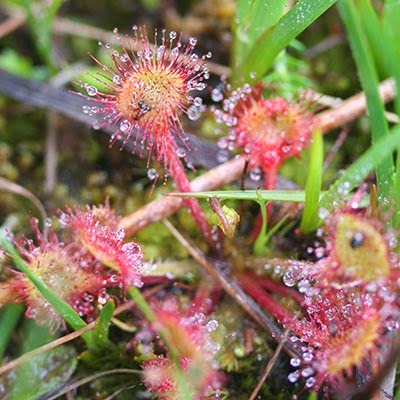I was invited to help with a couple of surveys this week and found some interesting specimens. The first location was a disused mill with associated ponds, dams, millraces and reservoirs. This is a wonderful site covering tens of acres, with old deciduous woodland and various meadows in addition to the water features mentioned above. It was also on limestone, which I always find interesting. Sedge and grass specialists would have a field day here. We were actually hoping for butterflies, but it was dull and wet, so I concentrated on leafmines, which are always there despite the weather.
First interesting specimen was this one on Ground Elder:
 |
| Blotch mine on Ground Elder |
Most mines are specific to family, perhaps even species of plant, but this is the mine of
Phytomyza angelicastri, which is more usually found on Angelica. So this isn't a new mine for me, but it is a new host for that species. I can now add that insect to plant association in my
Donegal Wildlife database.
There were a couple of specimens of Early Marsh Orchid in the middle of a path next to one of the ponds:
 |
| Early Marsh Orchid |
Sawflies are one of the least-studied groups of insects. They are difficult to identify to species, often requiring dissection for a certain identification. The larvae are also poorly documented, and since they can change their appearance dramatically when they shed their skin, identifications are very tricky. One or two species can be identified from photographs, but first you have to eliminate similar-looking Ichneumonids. This is the sawfly
Tenthredo livida (male):
The sawfly Tenthredo livida (male)
One of the main characters that can be used to separate Ichneumonids and Sawflies is the microsculpture on the thorax. In this case, it looks like the letter 'M':
 |
| Close-up showing microsculpture on the thorax |
Ichneumonids tend to have a smoother thorax, although that's not a hard and fast rule.
This Eristalis hoverfly caused me a few id problems.
 |
| Eristalis nemorum (male) |
One of the main keying features for these is the facial stripe, which is more or less absent on this specimen. So that immediately keys to
Eristalis arbustorum. But this didn't look right for that species. The key caters for specimens of
E. arbustorum with a slight facial stripe caused by wear and tear, but this still didn't key out properly until I took into account the very narrow stigma (dark thin line) on the outside edge of the wing. This is a feature of
Eristalis nemorum, which I am now told can sometimes be found with no facial stripe. I suspect that some of this variation is caused by the fact that my local specimens are found on acid soil, but this specimen was on lime.
Caddis flies are always found near water, since the larvae live at the bottom of ponds, ditches, etc.
 |
| Caddis Fly |
Shield Bugs, in common with all other Heteroptera, go through a series of nymph stages before becoming adult. In each stage they become slightly more like the adult in size and pattern. This appears to be a final-instar (full-size, with larger wing-cases) nymph of
Pentatoma rufipes:
 |
| Final instar nymph of the shieldbug Pentatoma rufipes |
There was a family of Mute Swans on one of the mill ponds:
 |
| Mute Swan and cygnets |
I wouldn't normally go near swans with cygnets, but I was advised that this pair were calm enough. The male quickly got between me and the family and hissed a bit, but stayed to the side, watching me until he saw that I was just taking photographs. Interestingly enough, this is
new to my species list.
All in all a lovely location that I will revisit in the future.

























